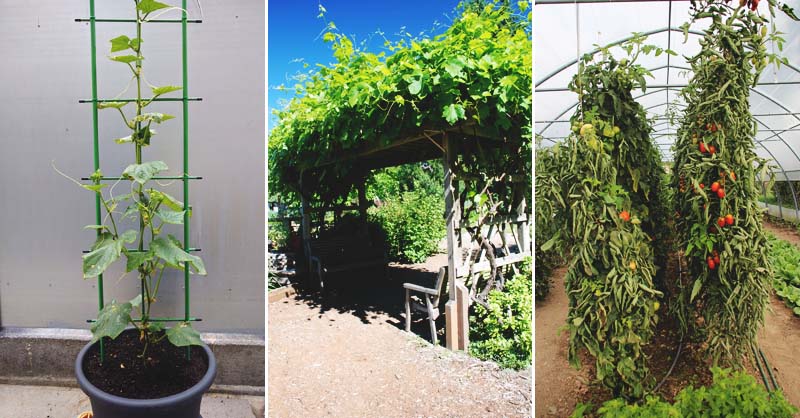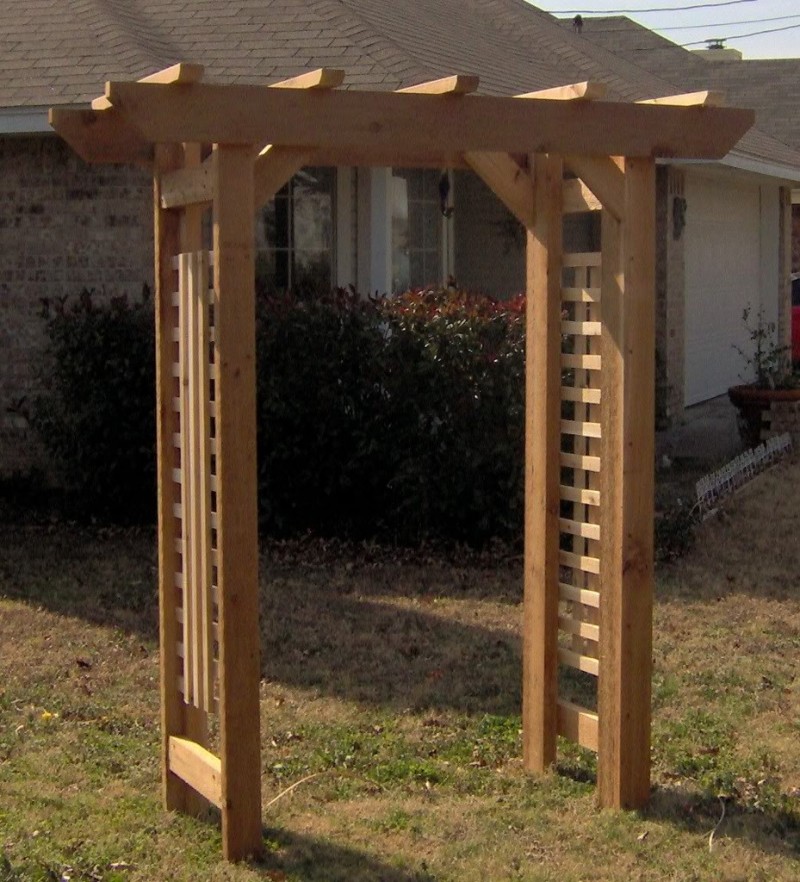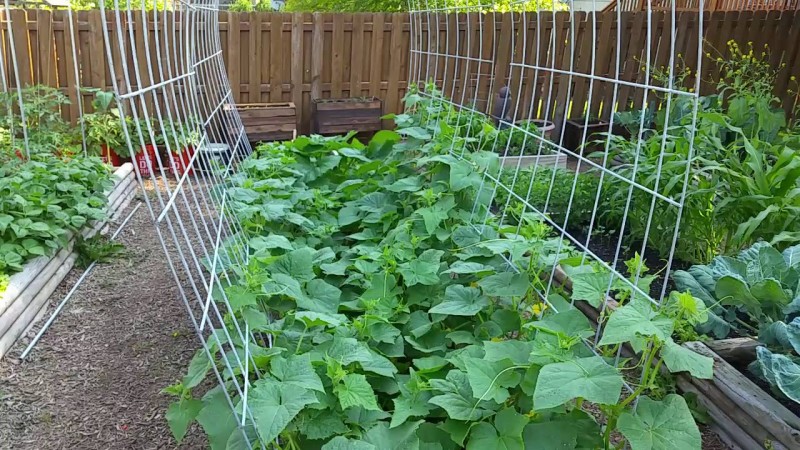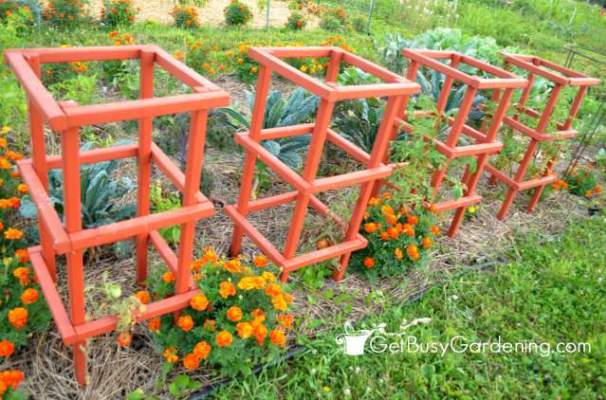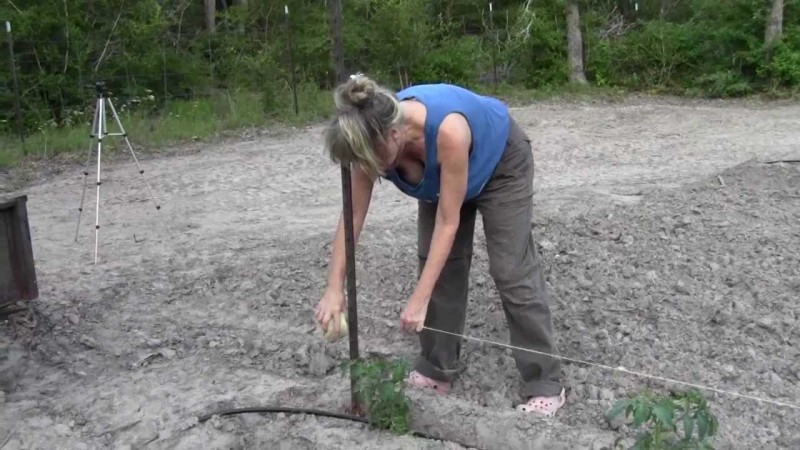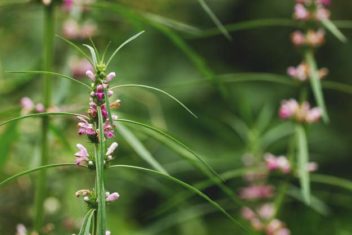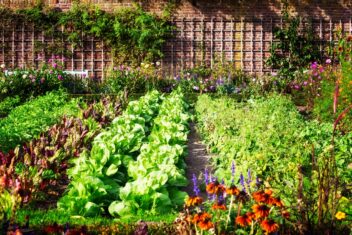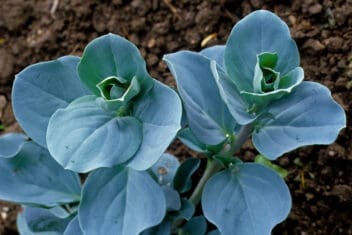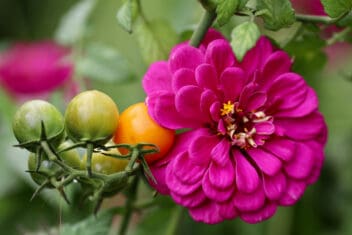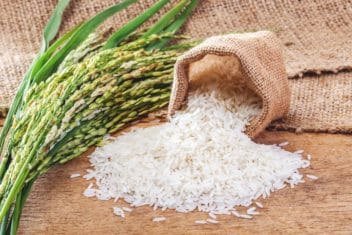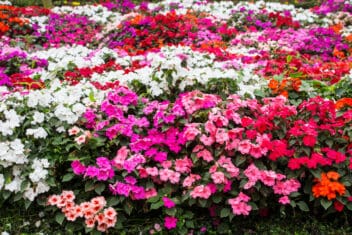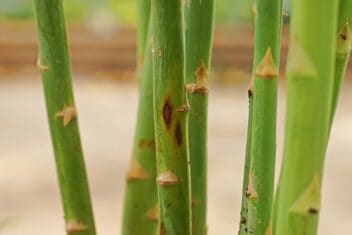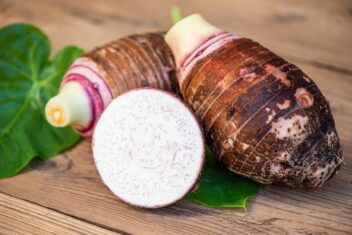There certain plants in your garden which naturally grow to a larger size. These plants will need extra support to keep their stems from breaking and the produce off the ground.
Plants which grow to two feet or taller are also automatically a good candidate for being staked. It will protect the plants from being beaten down by high winds and heavy rains.
Knowing this, it’s important to put a support in the ground for the plant when planting. A support will give the plant assistance to grow up against while it’s reaching maturity.
There are a few specifications to consider depending on what you’re staking.
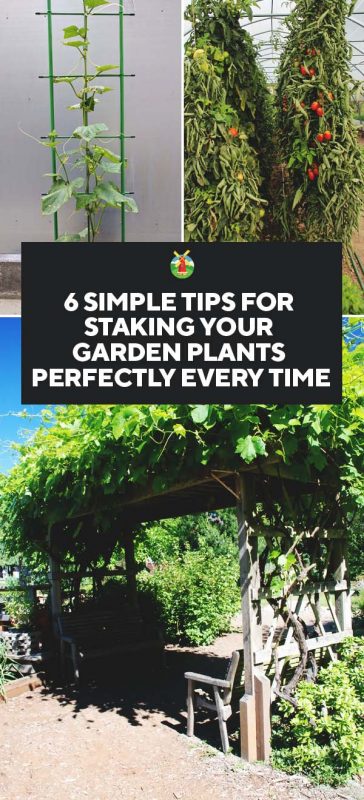
Staking Options
When you realize you are planting a more substantial plant in your garden, you’ll need to choose which type of stake you’d like to use for their support. Here are your stake options:
1. Single Stake
If you are growing a small garden or a container garden, you may not need a large number of stakes in your garden.
Instead, you may only need to offer support to a couple of plants. If this is the case, you can choose to stake each plant individually.
When you do this, you should place a single support next to or around the plants. You could use items like:
- Bamboo
- Rebar
- Tobacco sticks
- Plastic Stakes
- Tomato Cages
- Chicken fencing
- Nylon Netting
Any of these items should give your plant support as it works on producing its fruit.
2. Multiple Stake
If you are planting a larger garden, you could have numerous plants which are heavier. If you tried to stake each plant individually, you would have more time and materials invested in your garden.
This wouldn’t be budget-friendly or efficient. Therefore, you should go with a multiple stake idea.
You should place a stake at either end of the row of heavier plants. You’ll run a piece of twine at the top between two posts and another piece of twine at the bottom between the two posts.
From there, you’ll run a zig-zag pattern between the two pieces of twine from one post to the other. What this does is creates a woven design for the heavier plants to be able to grab onto and grow upwards.
Though it’s much more efficient for a large number of larger crops, you’ll need to plan your garden. This way, you’ll have all the heavy varieties placed together in the garden, which will make supporting them as a group much more manageable.
3. Tripod
Let’s say you want to plant a group of green beans in one area of your garden. Unless you grow bush beans, they’ll most likely climb.
This could be a mess if you don’t have a place for the beans to climb on to. In this case, it’s a good idea to use a tripod.
When I used my tripod for growing green beans, I found three large sticks and tied them together like a tripod or tee-pee design.
You will set the tripod in place and plant the green beans around the base of the tripod. As they grow, you should train them to climb the tripod. This will keep your harvest off the ground, organized, and make picking your green beans much easier.
Plants Which Should be Staked
We’ve discussed what staking a plant is and what options you have for staking your plants, but what plants should you intend on staking in your garden?
Well, there are quite a few:
- Pole beans
- Blackberries
- Cucumbers
- Tomatoes
- Melons
- Peas
- Pumpkins
- Peppers
- Gourds
Melons and pumpkins, you’ll have to grow a smaller variety to stake them. The larger types will break most stakes, no matter how sturdy.
But if you grow the smaller varieties, they should stake nicely and make picking much more accessible. As well as keeping the harvest off the ground, and safe from rot.
The Guidelines for Staking Your Plants
There are certain things you should take into consideration when staking your plants. If you don’t match the right stake with the right plant, your plant could either not climb the stake well or break it.
Which is why it’s essential to have a plan before you begin throwing stakes up in your garden. Here is what you need to consider:
1. Sturdy is Your Friend
When you are choosing a stake to hold up your heavier garden plants, you’ll want something sturdy.
If not, your plants could still end up on the ground. Be sure to pick durable materials which won’t bend under pressure.
Keep in mind, when placing the stakes by your bigger plants, you’ll need to consider how large the plant is going to get.
Ask yourself if the stake will hold the plant at full maturity. If the answer is yes, you chose a good stake. If you’re questioning it, you should look for something different.
2. Stake When Planting
It’s important to stake your plants when planting them. If you try to stake your tomatoes after they’ve reached full size, you’ll have a problem.
Imagine trying to wrestle a large tomato plant into a tomato cage. It’s going to be difficult to do.
However, if you apply the tomato cage when you plant the seedling, it should slide right over, and the tomato will learn to grow upward with support.
3. Each Plant Variety Needs Different Support
I’m going to get a little personal here, but I want you to imagine staking your plant like this: look at your plants like women.
You have some women who are tall and slender. You have some women who are more full-figured. Regardless of their shape, every woman still has to pick undergarments for support.
Realize, you aren’t going to fit a full-figured woman into an A-cup undergarment. Likewise, most tall and slender women aren’t going to need a DD-cup.
Well, your plants are the same. Some plants are going to be slenderer (like a pole bean) and will want to wrap around a slender pole as they grow.
Other crops, like a tomato, are full-figured and need more substantial support like a cage or tobacco stick. Consider what you’re planting and the preference which will best suit the crop.
Also, consider if the plant will grow up the stake on its own or if it’ll need to be tied. All of these things matter when choosing the proper stake for each plant which requires staking in your garden.
4. Be Careful When You Stake the Plant
Be careful when you are staking your plant. Be sure to choose soft materials to tie the plant to the stake to not damage the plant itself.
It’s a good idea to choose twine or string to tie a plant. If you select something rougher, you could sever the stem of the plant and ruin the plant altogether.
Reflect on what you’re using to secure the plant to avoid any damage.
5. Specifications of the Stake
If you are choosing to stake a plant individually, it’s important to consider the plant in a mature state. Be sure the stake you’re choosing won’t end up being taller than the plant itself.
The stake should run out at 2/3 of the way up a mature plant. You will tie the plant to the stake at this point.
This is a good basic rule to keep in mind when choosing the stake for your full-figured plants, such as tomatoes or peppers.
6. What’s Your Limit?
Finally, you need to consider what your physical limitations are. You could choose to run green beans around an arbor.
Well, are you going to be able to reach to pick them? If you are choosing to cage your tomatoes, are the holes big enough for your arms to fit through to pick them?
You want your plants to be supported, but it must be functional too. If the plants have support, but you can’t get to your harvest, you’ve done this in vain. Keep your physical limitations in mind when choosing a stake.
Stake Selections
There are many different stakes to choose from. I wanted to cover the basic varieties with you, to help you make an informed decision about what would work best in your garden. Here are the typical choices for a trellis:
1. Trellis
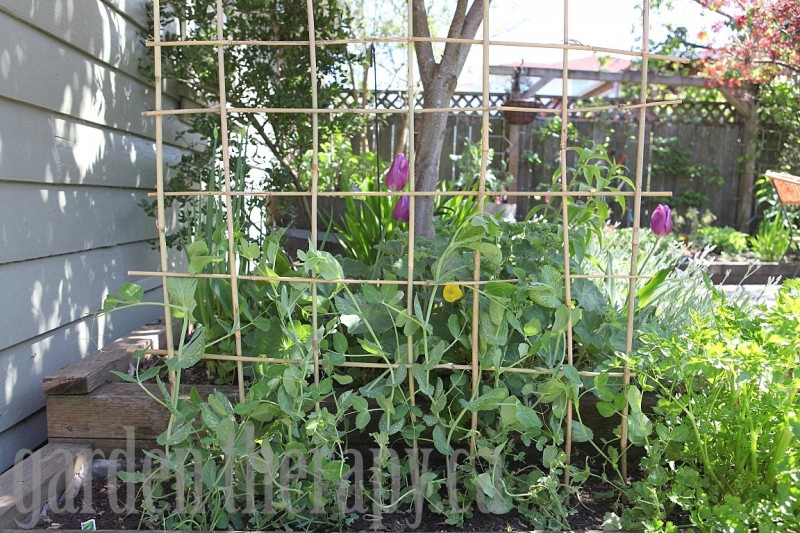
via gardentherapy.ca
When planting a more substantial plant, you could choose to put a wooden trellis behind the plant during planting. This trellis will give you a sturdy place to tie the plant to and offer a good bit of support as the plant reaches maturity.
2. Arbor
I love growing my half-runner green beans on an arbor. Not only is it pretty, but it makes picking them a ton easier. If you have plants which will climb, it’s important to give them a functional place to climb to because this will keep them from sprawling all over the ground.
3. Tripod
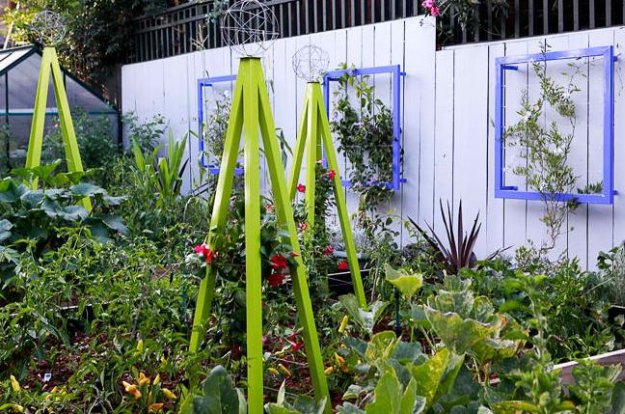
via The Horticult
I discussed building a tripod with you earlier. It’s a great, compact idea to grow green beans or small melon varieties. Tripods are durable and can handle a decent amount of weight.
4. Cattle Panels
Cattle panels are another great idea for supporting plants. We use this in our garden to support larger rows of green beans and tomatoes. They can handle the weight and will last year after year.
5. Tomato Cages
Tomato cages are a great option in a smaller garden with only a handful of tomatoes. It gets expensive to cage them all if you’re growing 50 tomato plants. But for smaller yards, it’s a great and durable option.
6. Single Stakes
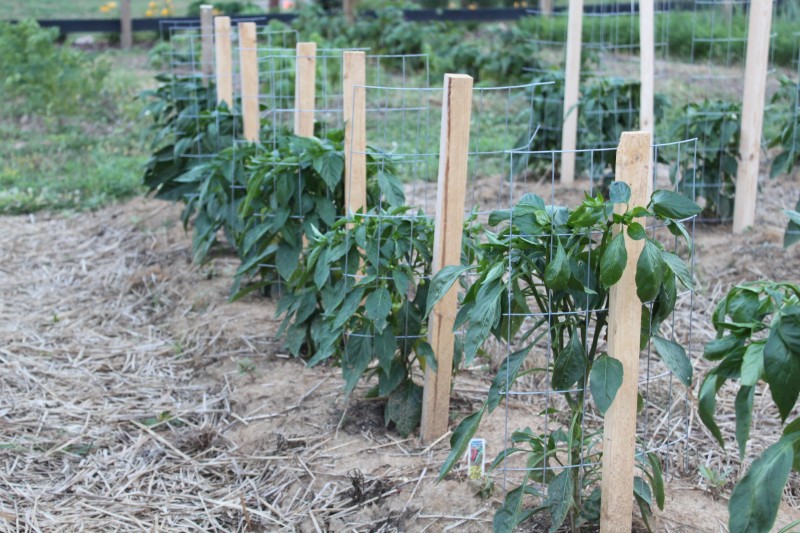
via porch.com
Single stakes consist of a robust vertical object planted next to the plant. You should tie the plant to the object for support.
7. Stake by the Row
We’ve already discussed how to stake your plants by the row above in the multiple stake section. However, if you are planning on staking a whole row of vegetables which are heavy or climb, this is a reliable option.
Well, you now know what staking is, how to go about it, and different options for staking your plants.
However, I want to hear from you. What plants do you stake in your garden and what stakes do you use?
We love hearing from you. Leave us your thoughts in the comment section below.

